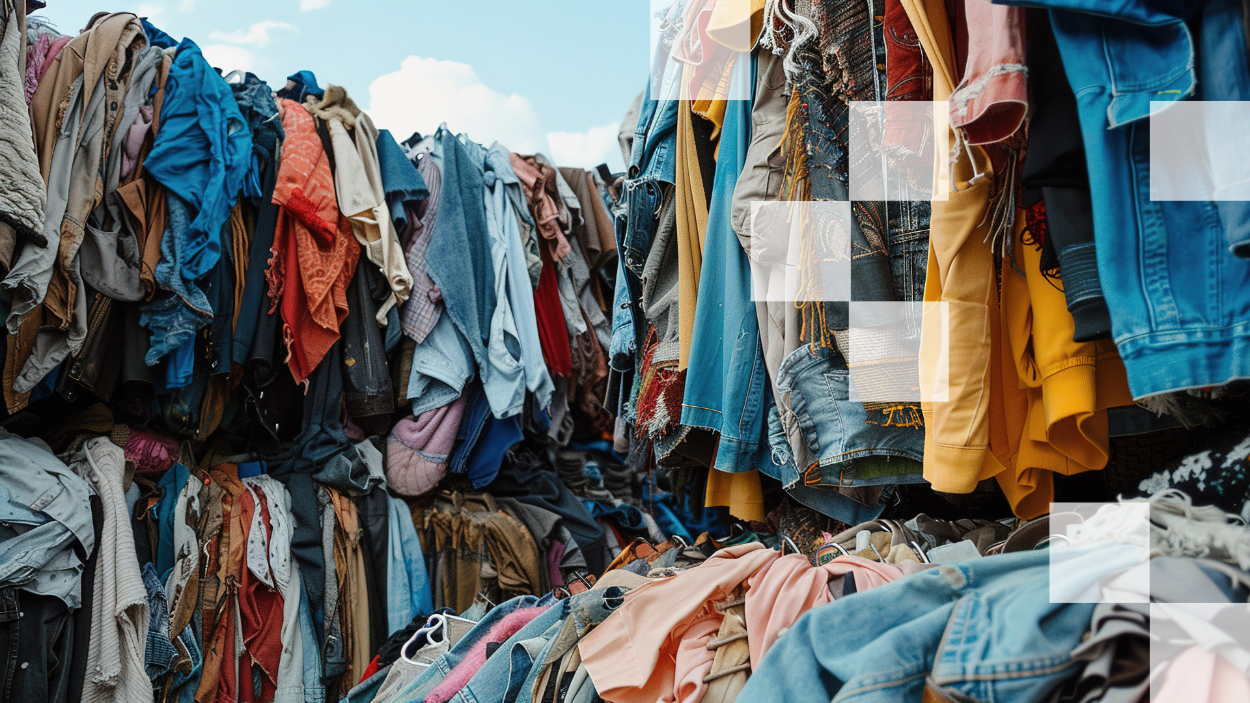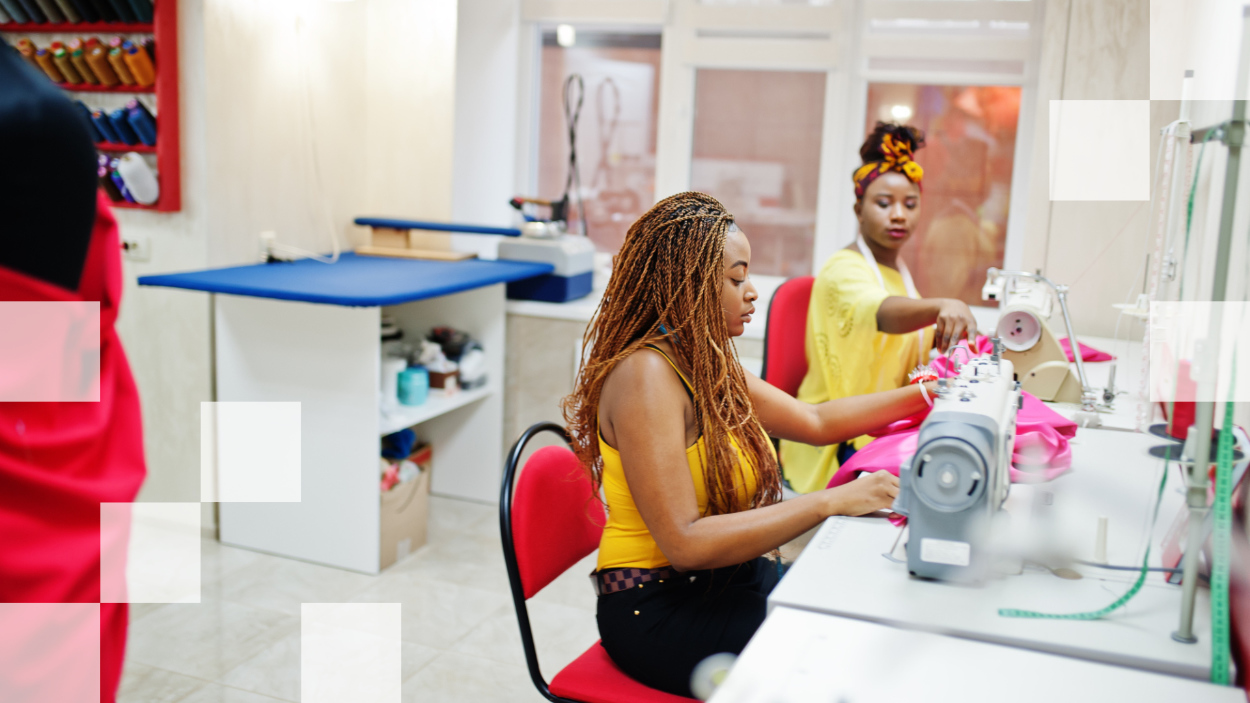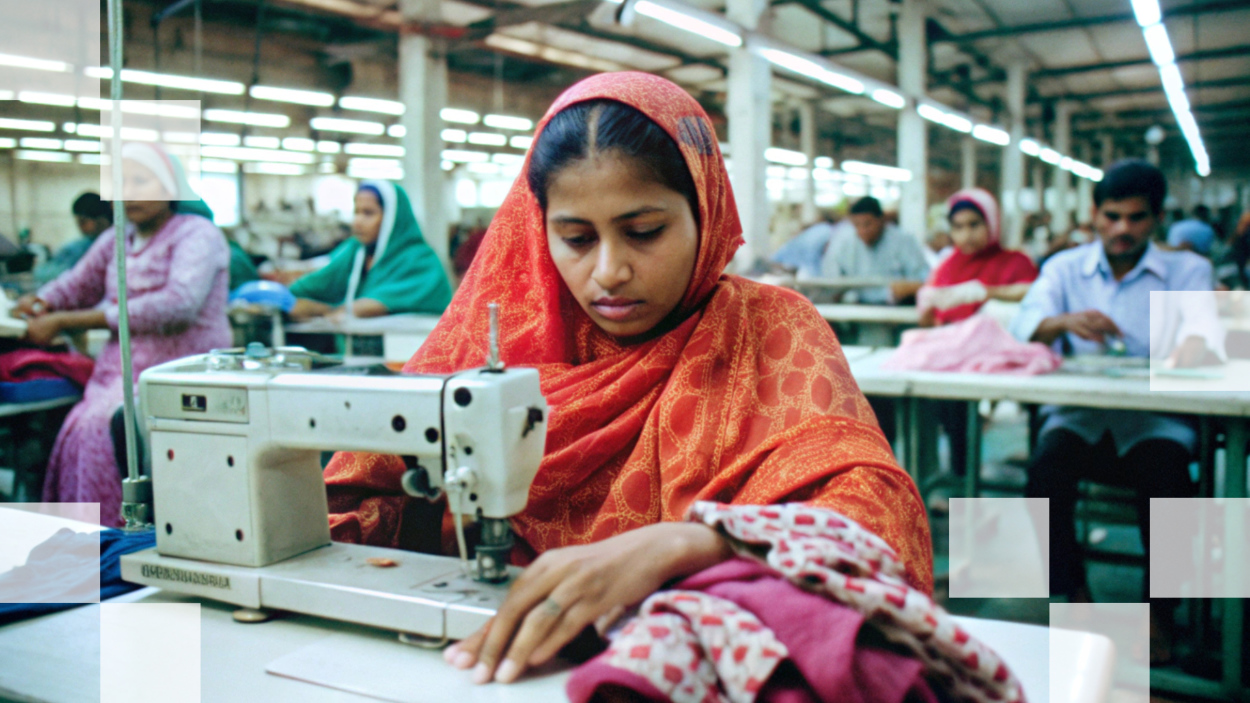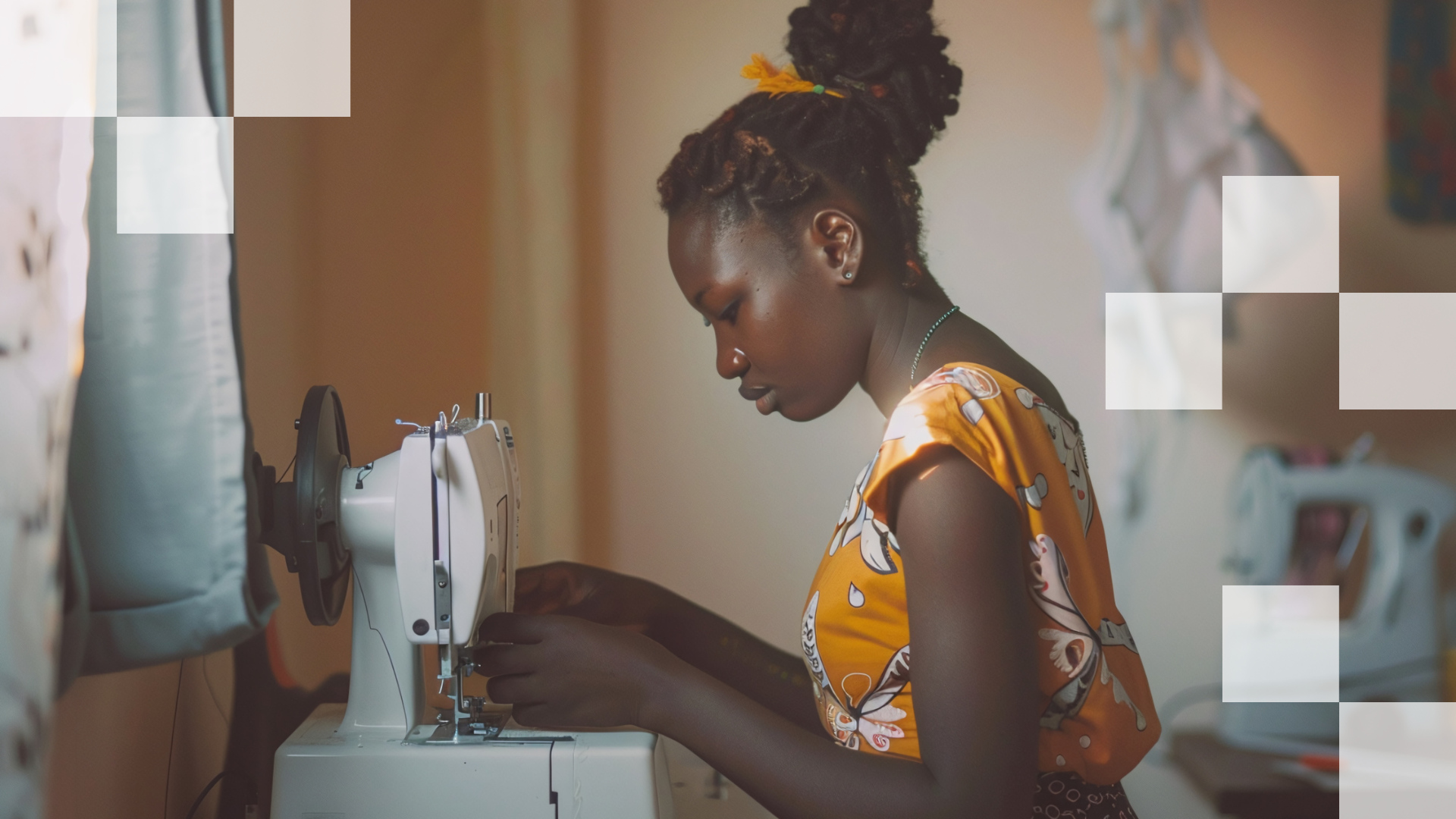This article was originally published in The Interline’s second Sustainability Report. To read other opinion pieces, exclusive editorials, and detailed profiles and interviews with key vendors, download the full Sustainability Report 2024 completely free of charge and ungated.
Half a world away from the big four fashion capitals where, at the time of writing, thousands of looks are being sent down runways to showcase what’s new for SS25 before AW24 has even really begun, 30,000 people in Ghana’s capital are reselling, repairing and upcycling around 25 million garments per month. Working within Kantamanto Market, the largest secondhand market in West Africa where approximately 15 million items of used clothing arrive every week, skilled tailors bring to life a circular fashion system on a scale that feels like a far-flung dream in the Global North.
On the surface, the fashion industry in the US and Western Europe appears to be embracing circularity from all angles. eBay and Oxfam recently hosted catwalks showcasing secondhand outfits at London Fashion Week, luxury upcycled brand Hodakova bagged the 2024 LVMH Prize, and a slew of brands, from M&S to Cos, has clamoured to join the ranks of those offering repairs services. But the production of brand-new garments made from virgin resources rattles on at warp speed. Not just production but overproduction, to the tune of 15-45 billion garments every year, as one report estimates.

Though the circular economy has reached “megatrend” status, according to the 2024 Circularity Gap Report, with the volume of discussions, debates and articles on the concept nearly tripling within the last five years, global circularity has in fact dropped by 21% in the same timeframe.
Accurate trend and demand forecasting can go some way to addressing the overproduction problem but to promote truly circular system change over merely tweaking the linear model The Or Foundation (an organisation that works out of Kantamanto) suggests “reduction targets for new clothing of at least 40% over five years, balanced with the increase of reuse and re-manufacture of existing materials”. Kantamanto has finessed the latter, and it’s a very different process to the precise, productionised, linear fashion manufacturing machine, requiring garment-by-garment inspection and ‘diagnosis’, experimentation, improvisation, and adaptability. An increase in reuse and manufacturing of this type in line with a production decrease of 40% – or even half that – would require an enormous shift in the labour market and reskilling on a grand scale.
Putting workers at the heart of the circular transition
“The signals we’re getting from global brands and retailers is that they’re looking to change, to move towards a circular economy. Now, what does that mean for workers? That’s a different question,” says Christina Hajagos-Clausen, Textile and Garment Industry Director at IndustriALL Global Union.

The slow burn of circularity within fashion – still lingering in pilots and fringe projects in many cases rather than being folded into core business models – means that currently it hasn’t changed any production patterns or led to loss of jobs, according to Hajagos-Clausen. Rather all eyes are on where jobs might migrate, where recycling centres will be located, and where in the production line innovation will happen.
“The slow burn of circularity within fashion – still lingering in pilots and fringe projects in many cases rather than being folded into core business models – means that currently it hasn’t changed any production patterns or led to loss of jobs.“
Legislative moves such as the EU’s Ecodesign for Sustainable Products Regulation and textile-based extended producer responsibility (EPR) under the revised Waste Framework Directive appear set to propel a demand for circular skills to meet mandates around repair and recycling, but they raise the question of how we reshape the industry according to the circular economy without leaving workers currently embedded in the linear system behind.
In a position paper on the EU Textiles Strategy (which fed into new and existing regulations), IndustriALL Europe called for “special attention to be paid to the potential impact on the current European workforce of the transition” and insisted that “trade unions play a key role in order to ensure that current jobs are safeguarded, while also working on creating more quality jobs” in the circular economy.

The Tamil Nadu Textile and Common Union (TTCU) holds a similar position. “Any discussion on a just transition to a greener economy must take place not on capital’s terms, but on labour’s,” the union stated in a report by War on Want.
However, the unknowns make it difficult to anticipate precisely where the risks lie, which is why, as Hajagos-Clausen asserts, organising on a sector-wide level now is essential. Enterprise-based bargaining, so often the norm in the garment industry, is not only inefficient but makes it near-impossible to put systemic protections in place for a future that will all but require systemic change.
First movers
A wholesale shift still awaits, but change is already happening in small pockets. To staff its factories in Amsterdam and London, United Repair Centre (URC) – a B2B clothing repair service which provides training and job opportunities for people who struggle to access the labour market – scouts local unemployment databases for those with textile experience or even simply “textile ambition”, as CEO Thami Schweichler puts it. “The more repairs you can bring in, the more jobs I can create. And that’s really the cornerstone of the company,” he says.
“A wholesale shift still awaits, but change is already happening in small pockets.“
To bolster its factory-based scouting, training, and support into work, URC launched the more formal United Repair Academy in January 2024. Operating in collaboration with MBO College, ROC Amsterdam, and the Amsterdam-West Municipal District, the Academy takes students through modules including basic knowledge of materials, skills in measurement and cutting, pattern drawing, sewing techniques, and basic and complex repairs. Alongside these hard skills, students obtain soft skills such as language, participation, and how to operate in a dynamic work environment, says Schweichler. “[Students] have a lot of self-empowerment to be developed, so we really focus on that to create a sense of community where they can thrive,” he continues.
Lindsay Rose Medoff, CEO and co-founder of Suay, a vertically integrated reuse and remanufacturing sewing shop in LA, has similar intentions but a slightly different approach, seeking to upskill experienced garment workers in remaking to diversify and future-proof their skill set. “Suay’s challenge has been not scaring off workers when they first come here and they see the piles of clothes,” she says. “As a baseline we have to provide a space for workers to feel safe enough to explore a different way of working.”

Like URC, Suay has been training its workers onsite, but is set to launch the Suay Centre for Reuse and Repair in the near future. The neighbouring facility will have an established curriculum (which Medoff believes should be open source), where garment workers can be upskilled not just as a route into a job at Suay but to demand higher salaries, develop their career, or start their own business. “It’s a training program to be able to give garment workers not only the skills for the planet and for consumers, but also to create generational wealth,” says Medoff.
The creation of fairly compensated, rewarding work which allows workers to thrive as a result of their much-needed skill is as much a central tenet of a worker-centred transition to circularity as the security of reskilling. “A transition to a more just and sustainable world is not possible by pushing more austerity on workers,” says the TTCU. “It is only possible through the payment of living wages for supply chain workers. It is only then a fundamental redistribution of wealth happens and without it, a just transition is not possible.”
Skill transfer
Medoff says the nuanced skills and intuition for handling fabric that garment workers have is a valuable foundation for learning circular techniques. For instance, an experienced sewer will be a dab hand at making two differently weighted fabrics behave when turning them into one new piece. Often, the skill hurdles are more creativity- and confidence-based. What’s a “cool” mark, patch or fade to make a feature out of and what should be discarded? Which patterns clash well, and which just plain clash? Should a tear be stitched or patched? “It requires thinking and the critical judgement ability of the tailors,” says Schweichler.

For Anita Shannon, founder of newly launched UK upcycling platform Newless, that creativity and critical judgement comes built-in with the fashion graduates who responded in droves to her job ads. “It’s hands on, they’re not just cutting the same pattern every day. They’re making diverse clothes, and they’re working with customers,” she says. “At the core, our tailors need to have creative inspiration. It’s a lot of freedom.”
“The nuanced skills and intuition for handling fabric that garment workers have is a valuable foundation for learning circular techniques.“
Though beholden to unit targets and mostly assigned to very specific and repetitive tasks such as sewing the same pocket on the same style of shirt, the technical skill that garment workers possess is inherently transferrable. It’s not an overhaul in technique that’s required, rather an injection of fashion school-style design thinking and getting comfortable with a new way of working that offers more agency than other settings.
A democratic approach
The wave of repair and remaking services such as URC, Suay, and Newless are necessarily being established in Western consumer markets to tackle the glut of product and keep it in circulation locally rather than allowing it to cross borders become another nation’s problem. However, the heavy-handed dictation of Western expectations across many Asian and African countries has seen the production line push out artisanal making and secondhand exports crowd out local textile industries, so the models springing up across the UK and the US needn’t be definitive.

Across the globe, techniques for extending the life of textiles, such as Kantha and Boro, have existed for centuries, and circular manufacturing education programmes such as Ghana’s No More Fast Fashion Lab, and Ethical Fashion Initiative’s three-year project in Kenya, “Designing the Future, a Green and Inclusive Fashion Ecosystem”, are focused on job production in a local context. A thriving circular economy should create space for repair and remanufacture of many different types, with regional knowledge and techniques properly valued. Not only would this diversify what circularity looks like for fashion, it would reject the dominant Westernised systems and perspectives which have led to the exportation of the disadvantages and failures of the linear system and the hoarding of the rewards.
The scale of the reskilling and business model shifts needed to catalyse a circular fashion economy may seem abstract or improbable. But so too did today’s globalised ready made garment industry just a few decades ago, and avoiding the issue is only delaying climate progress across multiple sectors.
“I think that many people are looking to see if we can actually pull it off. And we’re going to keep trying to create this,” says Medoff. “It doesn’t have to be so idealistic. I believe in these alternative solutions.”
